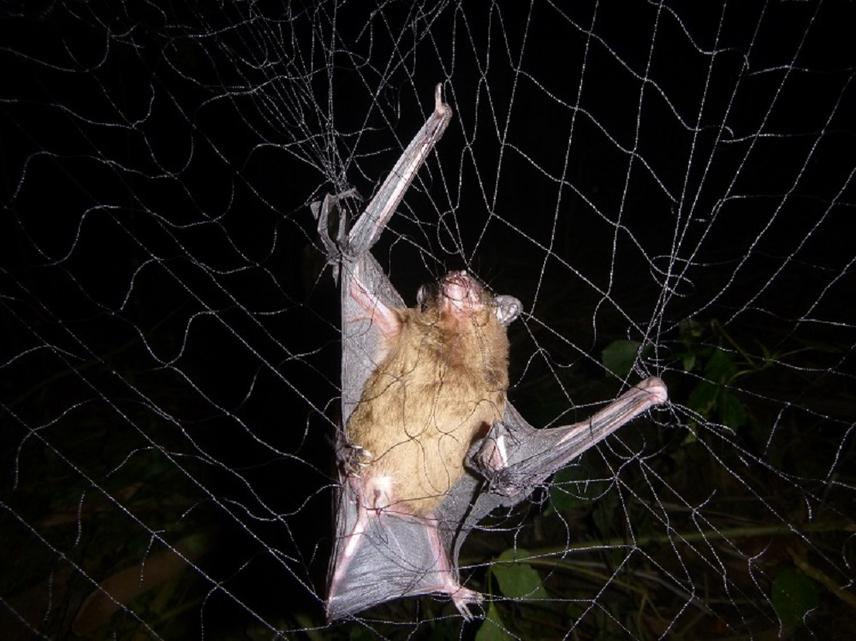Paul Tehoda
Other projects
This project aims to conduct detail ecological studies on Robbin’s house bat, and secure and protect its habitat through conservation education and stakeholder dialogues.

Scotophilus nucella captured in a mist net.
Robbin’s house bat (Scotophilus nucella) is a rare microbat only known from Ghana and Côte d’Ivoire and has been listed as Data Deficient on the IUCN Red list. Records of the species from Uganda and Tanzania were challenged by Thorn & Kerbis Peterhans (2009) and Stanley & Goodman (2011), respectively. In 2015, with funding from the Rufford Foundation, we conducted extended field survey across a year period in Krokosua Hills Forest Reserve (KHFR) where we recorded 11 individuals of S. nucella from two different localities which are 7 km apart. One of this two localities which is a patchy bamboo forest isolated in cocoa farms off the KHFR was a new habitat discovered for the species. Our survey together with old records, brought the total number of S. nucella known to science to 31 individuals, of which 23 was recorded in KHFR. This made KHFR the single most important site for detail ecological and conservation studies on the species to help update information on this species and protect its habitats. Consequently, this project is designed to provide detail information on the population size and structure, distribution and ecological variables of the species habitat, which would help update known information on the species.
Although our first RSG project has attained a significant advance in stimulating community support for bat conservation, the species still faces habitat threats including illegal mining and logging and agricultural encroachments, especially in the additionally discovered habitat. Hence, this project will continue to intensify conservation awareness campaign and capacity building programs to increase the understanding of the local people and students on the importance of the species and the benefits they could derive from ensuring that this bats’ habitats are secured. This will rally more community support for the species and make the local people undertake necessary efforts to halt imminent and ongoing activities that are detrimental to the long-term persistence of bats. The project will also motivate more students to take an active interest in bat research and conservation. Also, the project findings together with outcomes of stakeholder dialogues will help us develop pragmatic conservation action plan for S. nucella in the KHFR.